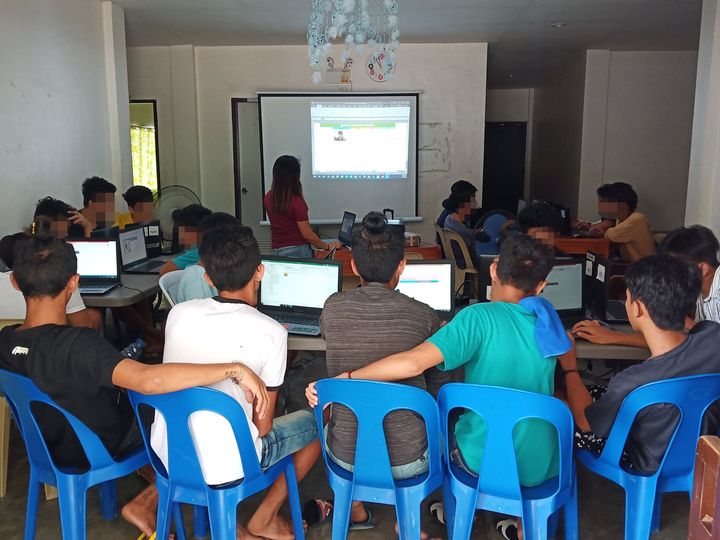Finding Hope inside a Bahay Pag-asa

With the pandemic and the expected shift to the new normal, children detained face feelings of isolation as they are separated from their loved ones. The children housed in the Bahay Pag-asa or House of Hope, must cooperate and submit in order to be given a second chance, but while they are there, they deserve a comfortable yet transformational stay, in a place where there is a ray of hope.
The city government’s goal is to run a child-care institution where children in conflict with the law (CICL) can find hope and be hopeful. New plans for the structure and operation of Bahay Pag-asa have been developed, according to the transformational facility’s new manager, Social Welfare III Aynodin S. Marohom. As required by the Juvenile Justice and Welfare Act, as amended, a Bahay Pag-asa is required by law to provide short-term residential care for children in conflict with the law (CICL), or children who are alleged, accused, or adjudged to have committed an offense under Philippine laws and are awaiting court disposition or transfer to another facility.
Mohorom, on the other hand, presented some findings and recommendations on how to improve the operation of the said center during an LCPC meeting with Mayor Eliordo U. Ogena. According to Marohom, the Center’s Social Worker in charge of CICL cases is also in charge of cases in the community and is overburdened with work. Because of the handling Social Worker’s work overload, which is a major factor in the compromise of operation, he was appointed as the permanent head of the center, and a permanent Home Management Technologist was also designated to help him. One of the issues addressed was the center’s limited number of houseparents and workforce. As a result, Mahorom emphasized the need for additional personnel.
Among the recommendations is the assignment of a Social Worker handling the cases, preferably holding the position of Social Welfare Officer II and is accredited in handling court cases, who will be the Case Manager to ensure the CICL’s rehabilitation while at the Center. Currently, three houseparents, three Social Workers, one Psychometrician, and eight guards run Bahay Pag-asa.
The need for a functional infirmary room was also among the priorities. Mahorom emphasized the need for the Center to have a standby vehicle available at all times. Meanwhile, Mohomon presented some of the center’s upcoming plans and innovations for this year. The proposed training includes Hollow Block Making, Basic First Aid Training, Disaster Preparedness Training, and Psycho-social First Aid.
Furthermore, the center’s workforce will go through a series of capability building trainings and exercises such as GRCM training, Rights-based and Strength-based Case Management, and Psychological First Aid Training to improve their ability to run the center. In addition, a benchmark visit to Regional Rehabilitation Center for Youth (RRCY XII) at Tantangan will be conducted in the coming days to learn about their best practices. Two of the CICL will also be endorsed to RRCY XII in the days to come for appropriate interventions, particularly in cases requiring intensive psychological treatment.
City Engineering Office-BDP, on the other hand, will work on repairs such as wiring, plumbing, and flooring. Rotaract and the Rotary Club also volunteered to repaint the center. Among the priorities is office beautification to provide a more pleasant working environment for the staff.
A Multi-Disciplinary Team, on the other hand, will be formed. Among the initiatives is the development of a simple Data Bank System, which includes information and data management in the center.
Meanwhile, among the current innovations implemented within the center were the creation of referral pathways and networks.
Despite the challenges that the center has faced in the past, Marohom is confident that they can manage a Bahay Pag-asa that provides “transformational” programs and wholistic formation.
With the new innovations and proposed programs, projects, and activities for the children to have a second chance at life, there is indeed hope inside the Bahay Pag-asa.